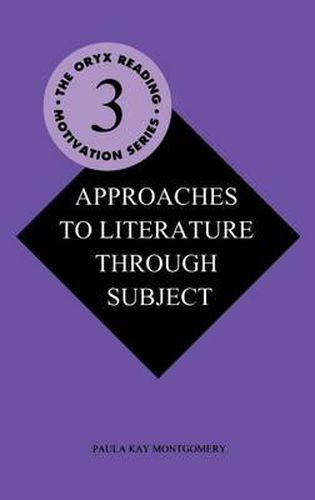Readings Newsletter
Become a Readings Member to make your shopping experience even easier.
Sign in or sign up for free!
You’re not far away from qualifying for FREE standard shipping within Australia
You’ve qualified for FREE standard shipping within Australia
The cart is loading…






Using Approaches to Literature Through Subject , a volume in the Oryx Reading Motivation Series , teachers and librarians can encourage middle school students’ reading interests by subject-linking people, places, things, and events to the factors that influence students to read: sex, age, culture/race, intelligence, and socioeconomic factors. Chapter 1 defines a subject approach, lists the advantages and disadvantages of using a subject approach, and examines attitudes and skills useful to teachers and librarians. Chapter 2 includes the origin of subjects, and methods that can be used to diagnose students’ reading interests and develop interactive discussion groups. Chapters 3-6 are individually subject-specific, and cover (in order) people, places, things, and events. The author chose sources and materials based on a specific set of guidelines: general literary quality and accuracy; availability; readability and interest levels; ethnic, racial and sex-role representation; availability of media support materials; and recommendations in reliable journals and guides. Suggested teaching methods for teaching specific subjects, student activities, and professional and student resources are fully described throughout the book.
$9.00 standard shipping within Australia
FREE standard shipping within Australia for orders over $100.00
Express & International shipping calculated at checkout
Using Approaches to Literature Through Subject , a volume in the Oryx Reading Motivation Series , teachers and librarians can encourage middle school students’ reading interests by subject-linking people, places, things, and events to the factors that influence students to read: sex, age, culture/race, intelligence, and socioeconomic factors. Chapter 1 defines a subject approach, lists the advantages and disadvantages of using a subject approach, and examines attitudes and skills useful to teachers and librarians. Chapter 2 includes the origin of subjects, and methods that can be used to diagnose students’ reading interests and develop interactive discussion groups. Chapters 3-6 are individually subject-specific, and cover (in order) people, places, things, and events. The author chose sources and materials based on a specific set of guidelines: general literary quality and accuracy; availability; readability and interest levels; ethnic, racial and sex-role representation; availability of media support materials; and recommendations in reliable journals and guides. Suggested teaching methods for teaching specific subjects, student activities, and professional and student resources are fully described throughout the book.